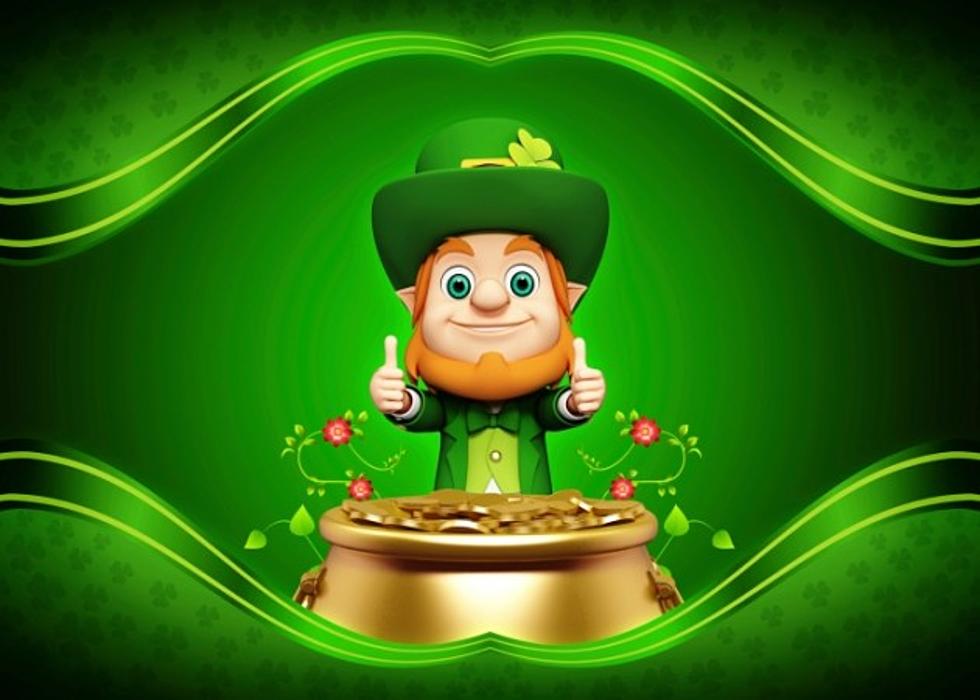
Sunday is St. Patrick’s Day! Regardless of your heritage, everyone’s Irish on March 17th. Get your green on, bust out your brogue, and impress your friends and family with this fun St. Patrick’s Day trivia. See how much you really know about Ireland, St. Patrick and the traditions that surround the annual celebration of him:
– Saint Patrick himself would have to deal with pinching on his feast day. His color was “Saint Patrick’s blue,” a light shade. The color green only became associated with the big day after it was linked to the Irish independence movement in the late 18th century.
Saint Patrick was British. Although he made his mark by introducing Christianity to Ireland in the year 432, Patrick wasn’t Irish himself. He was born to Roman parents in Scotland or Wales in the late fourth century.
The Irish take Saint Patrick’s Day seriously. As you might expect, Saint Patrick’s Day is a huge deal in his old stomping grounds. It’s a national holiday in both Ireland and Northern Ireland.
– New York City’s Saint Patrick’s Day Parade is one of the world’s largest parades. Since 1762, 250,000 marchers have traipsed up Fifth Avenue on foot – the parade still doesn’t allow floats, cars, or other modern trappings.
– New York may have more manpower, but Chicago has a spectacle all its own. The city has been celebrating Saint Patrick by dumping green dye into the Chicago River since 1962. It takes 40 tons of dye to get the river to a suitably festive shade!
– For most of the 20th century, Saint Patrick’s Day was considered a strictly religious holiday in Ireland, which meant that the nation’s pubs were closed for business on March 17. The one exception went to beer vendors at the big national dog show, which was always held on Saint Patrick’s Day. In 1970, the day was converted to a national holiday, and the stout resumed flowing.
– How did the shamrock become associated with Saint Patrick? According to Irish legend, the saint used the three-leafed plant as a metaphor for the Holy Trinity when he was first introducing Christianity to Ireland.
– In Irish lore, Saint Patrick gets credit for driving all the snakes out of Ireland. Modern scientists suggest that the job might not have been too hard – according to the fossil record, Ireland has never been home to any snakes. Through the Ice Age, Ireland was too cold to host any reptiles, and the surrounding seas have staved off serpentine invaders ever since. Modern scholars think the “snakes” Saint Patrick drove away were likely metaphorical.
– Corned beef and cabbage, a traditional Saint Patrick’s Day staple, doesn’t have anything to do with the grain corn. Instead, it’s a nod to the large grains of salt that were historically used to cure meats, which were also known as “corns.”
– All of the Saint Patrick’s Day revelry around the globe is great news for brewers. A 2012 estimate pegged the total amount spent on beer for Saint Patrick’s Day celebrations at $245 million. And that’s before tips to pubs’ bartenders.
– According to Irish legend, Saint Patrick wasn’t originally called Patrick. His birth name was Maewyn Succat, but he changed his name to Patricius after becoming a priest.
– There are no female leprechauns! Don’t be fooled by any holiday decorations showing lady leprechauns. In traditional Irish folk tales, there are no female leprechauns, only nattily attired little guys.
– Another little-known fact from Irish lore: Leprechauns earned that gold they’re guarding. According to legend, leprechauns spend their days making and mending shoes.
– You can’t attend a Saint Patrick’s Day event without hearing a cry of “Erin go Bragh.” What’s the phrase mean? It’s a corruption of the Irish Éirinn go Brách, which means roughly “Ireland Forever.”








 EastTexasRadio.com Powered by Ten Stations
EastTexasRadio.com Powered by Ten Stations




